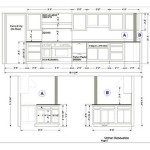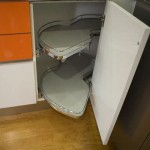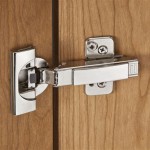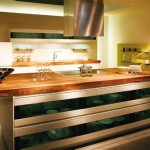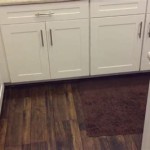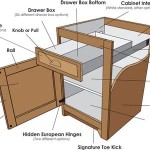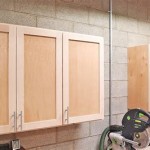Standard Width of Kitchen Cabinet Doors: A Comprehensive Guide
Kitchen cabinet doors are a fundamental element of kitchen design, impacting both functionality and aesthetics. While design preferences vary, understanding standard dimensions is crucial for planning and executing successful kitchen renovations or installations. The width of cabinet doors, in particular, plays a significant role in the overall layout, accessibility, and visual appeal of the kitchen. Deviations from standard widths can lead to challenges with hardware compatibility, door swing clearances, and the overall flow of the kitchen space. This article provides a comprehensive overview of standard kitchen cabinet door widths, exploring the factors influencing these dimensions and the implications for kitchen design.
Understanding Standard Widths
The concept of "standard" in kitchen cabinet door widths can be slightly nuanced. While there isn't a single universally mandated width, certain measurements are commonly employed by manufacturers and are considered industry benchmarks. These standard widths are designed to accommodate typical cabinet sizes, optimize material usage, and ensure compatibility with standard hardware like hinges and pulls. Adhering to these standards can simplify the design process, reduce costs associated with custom builds, and provide greater flexibility in selecting cabinet components.
Generally, standard widths for base cabinet doors range from 12 inches to 24 inches, increasing in increments of 3 inches. This means you'll commonly find widths of 12, 15, 18, 21, and 24 inches. For wall cabinets, the width ranges are similar. However, it's important to note that these are typical ranges, and slight variations may exist depending on the manufacturer or style of cabinet. Some manufacturers may offer narrower or wider options to accommodate specific design requirements. Furthermore, the concept of a "standard" width may differ based on regional preferences and prevalent construction practices.
It's crucial not to confuse the door width with the cabinet width. The door width refers to the actual measurement of the door itself, while the cabinet width encompasses the entire cabinet structure, including the side panels and frame. The door width is always slightly smaller than the corresponding cabinet opening to allow for clearance and proper door swing. The amount of this clearance varies depending on the type of hinge used and the overall design of the cabinet.
For example, a base cabinet with an 18-inch width will typically have a door that is slightly less than 18 inches wide, perhaps 17 3/4 inches. The exact difference depends on the cabinet construction. Face-frame cabinets, which have a visible frame around the door opening, require a larger clearance than frameless cabinets, where the door sits flush with the cabinet box. Always consult the manufacturer's specifications for precise door dimensions and recommended clearances.
The choice of door width can also be influenced by the overall design of the kitchen. In kitchens with limited space, narrower doors may be preferred to maximize walkway space and prevent doors from colliding with adjacent cabinets or appliances. Conversely, wider doors can provide easier access to the cabinet interior and create a more visually impactful design. The decision ultimately depends on a careful consideration of space constraints, functionality requirements, and aesthetic preferences.
Factors Influencing Door Width Selection
Several factors influence the optimal selection of kitchen cabinet door widths. These factors include the size and layout of the kitchen, the intended use of the cabinets, the style of the cabinets, and accessibility considerations. Carefully evaluating these factors can help determine the most appropriate door widths for a particular kitchen design.
The overall size and layout of the kitchen are primary determinants of door width. In smaller kitchens, space is at a premium, and narrower doors may be necessary to avoid overcrowding and maintain comfortable walkways. Wider doors, while providing easier access, can obstruct traffic flow and make the kitchen feel cramped. Conversely, in larger kitchens, wider doors can be used without sacrificing functionality, and they can contribute to a more spacious and luxurious feel.
The layout of the kitchen, including the placement of appliances, countertops, and islands, also affects door width selection. Doors should be strategically positioned to avoid interfering with appliances or other fixtures. For example, a door placed next to a refrigerator should be wide enough to allow easy access to the refrigerator's contents without obstructing the doorway. Similarly, doors located near the sink should be positioned to avoid interfering with the user while washing dishes. Careful planning of door placement is essential to ensure a functional and ergonomic kitchen design.
The intended use of the cabinets also plays a role in determining the appropriate door width. Cabinets designed to store frequently used items, such as dishes or cookware, may benefit from wider doors for easier access. Cabinets used for storing less frequently accessed items, such as holiday decorations or seasonal appliances, may be equipped with narrower doors to conserve space. The specific contents of each cabinet should be considered when selecting the optimal door width.
The style of the cabinets can also influence door width selection. Traditional cabinet styles, which often feature ornate detailing and raised panel doors, may benefit from wider doors to showcase the design elements. Modern cabinet styles, which tend to be more minimalist and streamlined, may be better suited to narrower doors that emphasize clean lines and simplicity. The overall aesthetic of the kitchen should be considered when selecting door widths to ensure a cohesive and harmonious design.
Accessibility considerations are also crucial when selecting kitchen cabinet door widths. Individuals with mobility limitations may find it challenging to open and close wide doors, particularly in tight spaces. In such cases, narrower doors may be more appropriate. Alternatively, wider doors can be beneficial for individuals who use wheelchairs or other mobility devices, as they provide easier access to the cabinet interior. Universal design principles should be considered when selecting door widths to ensure that the kitchen is accessible to all users.
Implications for Kitchen Design and Installation
The choice of kitchen cabinet door widths has significant implications for both the design and installation of the kitchen. Incorrect door widths can lead to a variety of problems, including poor space utilization, difficulty accessing cabinet contents, and aesthetic imbalances. Careful planning and attention to detail are essential to ensure that door widths are appropriate for the specific kitchen design and installation requirements.
One of the primary implications of door width selection is its impact on space utilization. Incorrect door widths can result in wasted space or overcrowded conditions. Doors that are too wide can obstruct walkways and make the kitchen feel cramped, while doors that are too narrow can limit access to cabinet contents and make it difficult to organize items effectively. Selecting the appropriate door widths is essential to optimize space utilization and create a functional and comfortable kitchen environment.
Another implication is the effect on accessibility. Doors that are too wide or too narrow can be difficult to open and close, particularly for individuals with mobility limitations. Doors that are positioned in awkward locations can also pose accessibility challenges. Careful consideration of accessibility principles is essential to ensure that the kitchen is usable by all members of the household.
Aesthetic considerations are equally important. Door widths should be proportionate to the overall size and style of the cabinets and the kitchen. Doors that are too wide or too narrow can create a visual imbalance and detract from the overall aesthetic appeal of the kitchen. Selecting door widths that complement the design elements of the kitchen is essential to create a harmonious and visually pleasing space.
Installation challenges can also arise from incorrect door width selection. Doors that are too wide may not fit properly within the cabinet opening, requiring adjustments or modifications to the cabinet structure. Doors that are too narrow may leave unsightly gaps or require the installation of fillers to close the space. Precise measurements and careful attention to detail are essential during the installation process to ensure that the doors fit properly and function smoothly.
Hardware compatibility is another significant consideration. Different door widths may require different types of hinges, pulls, and other hardware. Selecting hardware that is appropriate for the specific door width is essential to ensure proper functionality and durability. Consulting with a hardware specialist can help ensure that the correct hardware is selected for each door.
In conclusion, understanding standard kitchen cabinet door widths and the factors influencing their selection is crucial for successful kitchen design and installation. By carefully considering space constraints, functionality requirements, aesthetic preferences, and accessibility considerations, homeowners and designers can select door widths that optimize space utilization, enhance accessibility, and create a visually appealing kitchen environment. Accurate measurements, careful planning, and attention to detail are essential to ensure that the doors fit properly, function smoothly, and contribute to the overall success of the kitchen project.

N Standard Kitchen Dimensions Renomart

Kitchen Unit Door Combinations

Refacing Kitchen Cabinets Measuring New Cabinet Doors Dimensions Wall

Cabinet Face Dimensions

Kitchen Unit Door Combinations

N Standard Kitchen Dimensions Renomart

Kitchen Cabinet Refacing Door Depot
Guide To Kitchen Cabinet Sizes And Dimensions

Barker Door Cabinet Doors And Drawer Boxes

Abcs Of Kitchen Cabinets And Specifications Granite Quartz Countertops Factory
Related Posts

